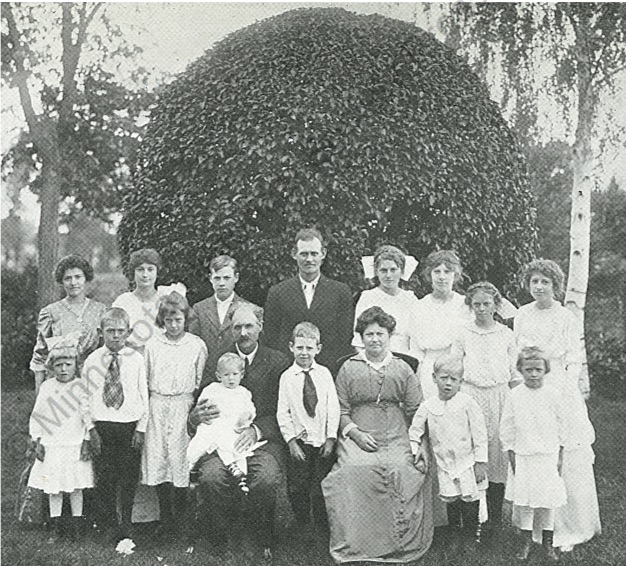
This is one of my favorite photos from my book. The plant in the background is a buckthorn! In the early 20th century, buckthorn were considered fantastic landscape plants.
Buckthorn is a restricted noxious weed in Minnesota because of its invasive nature and its impact on wildlife habitats. Once buckthorn gets established, it takes over. There are two types: common buckthorn (Rhamnus cathartica) and glossy buckthorn (Frangula alnus). Common buckthorn came to the U.S. from Europe in the 1800s and was used for a hedge in many landscapes. By the 1930s, its negative qualities were well-known and the nursery trade stopped selling it. The glossy buckthorn is particularly invasive around wetlands.
The best way to control buckthorn is to pull it while it is still small. According to the University of Minnesota, it will not resprout from roots underground. Small plants (under 3/8th inch diameter) can be dug or pulled, but for larger ones many buckthorn removal groups use a weed wench or root talon. (The garden club has one that they have used for buckthorn remvoal.) For really large plants, the recommended control method is to cut the trunk as close to the ground as possible and then immediately treat the stump by painting on an herbicide containing triclopyr. (Garlon is the brand name most often recommended.)
You can find detailed information on identifying and controlling buckthorn at the Minnesota Department of Natural Resources website and at the U’s site. Getting rid of buckthorn can be a long process—homeowners must stay vigilant because the seeds can last five years in the ground. As you remove buckthorn, don’t forget to replant the area with a variety of native shrubs and trees that will attract birds and other wildlife. The DNR recommends plants like highbush American cranberry, nannyberry, serviceberry, chokecherry and gray dogwood.
Leave a Reply